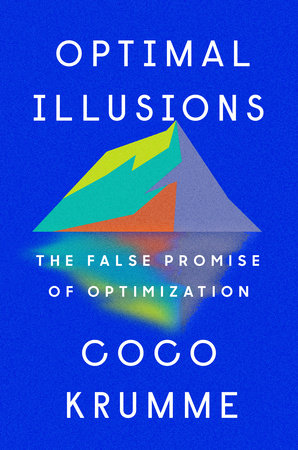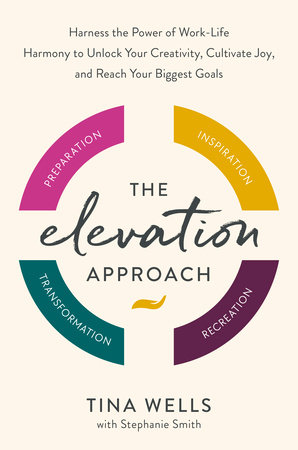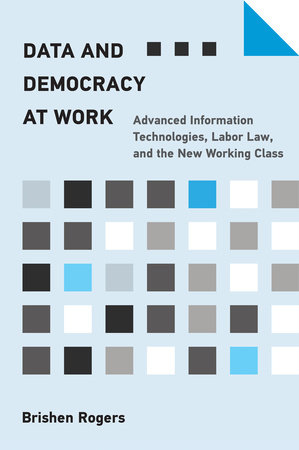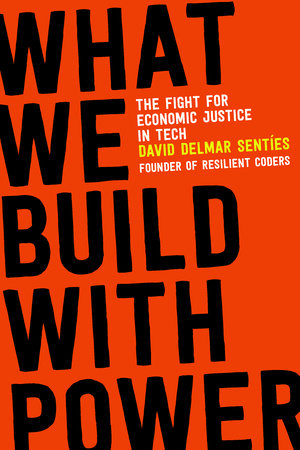Quick Summary
One Sentence Summary
“The Inclusive Language Field Guide” by Suzanne Wertheim, PhD, is a practical guide to understanding and implementing inclusive language in everyday communication.
Big Idea
The central theme of the book revolves around enhancing awareness and use of inclusive language to foster a more respectful and equitable society.
Five Key Ideas
- Definition of Inclusive Language: Explains what inclusive language is and its importance in modern communication.
- Cultural Sensitivity: Discusses the role of cultural awareness in shaping language use and avoiding stereotypes.
- Gender and Pronouns: Covers the significance of gender-neutral language and correct pronoun usage.
- Inclusive Communication in the Workplace: Offers guidelines for applying inclusive language in professional settings.
- Evolving Language Trends: Addresses the dynamic nature of language and the need to stay informed about emerging trends in inclusivity.
Actionable Advice
The book provides practical tips on how to incorporate inclusive language into daily interactions, suggesting ways to be more mindful of the words we choose and their impact on others.
About the Author
Dr. Suzanne Wertheim is a linguist and an expert in sociolinguistics, specializing in language, culture, and inclusive communication.
Read Next
- “Talking Across the Divide” by Justin Lee, a guide on communicating effectively in a polarized world.
- “So You Want to Talk About Race” by Ijeoma Oluo, offering insights into racial dialogues.
- “Gender: Your Guide” by Lee Airton, focusing on gender inclusivity and understanding.
In Depth
Definition of Inclusive Language
Inclusive language is about choosing words that do not discriminate or exclude. It’s about being mindful of how our words can impact others. The book delves deep into this concept, emphasizing its role in creating an environment where everyone feels respected and valued.
Wertheim explains that inclusive language goes beyond just avoiding offensive terms. It’s about understanding the diverse experiences of people and acknowledging them in our communication. This approach is crucial in a world where diversity is the norm, not the exception.
One powerful example in the book involves the use of gender-neutral language. Wertheim illustrates this through a case study in a corporate setting. The company in question traditionally used male-centric language in its internal and external communications – words like “chairman” and “mankind”. After a review, they shifted to gender-neutral alternatives like “chairperson” and “humankind”. This small change made a significant impact. Employees reported feeling more included and valued, regardless of their gender identity.
The book also highlights the importance of language in shaping our perceptions of others. For instance, referring to a group of people by a stereotype or a single characteristic can diminish their individuality and experiences. Wertheim points out how terms like “the homeless” reduce people to a single aspect of their lives, rather than recognizing them as individuals with diverse stories and identities.
A quote from the book sums this up effectively:
“Language shapes reality. By consciously adopting more inclusive language, we’re not just being politically correct – we’re acknowledging the rich tapestry of human experiences and showing respect for them.”
Wertheim’s guidance is practical. She suggests starting with self-awareness: listening to our own language use and observing how others react. Then, it’s about education: learning about different cultures, identities, and experiences to inform our language choices.
Another key aspect is adaptability. Language is always evolving, and what is considered inclusive today might change tomorrow. Wertheim encourages readers to stay informed and be willing to adapt their language use as societal norms shift.
In essence, inclusive language is about respect and empathy. It’s a tool for building bridges between people of different backgrounds and experiences. By being mindful of our words, we can create a more inclusive and understanding world. This part of the book is not just theoretical; it provides a practical roadmap for anyone looking to improve their communication in a diverse world.
Cultural Sensitivity
Cultural sensitivity in language is about recognizing and respecting the diverse backgrounds of people we interact with. It’s understanding that words can carry different meanings and connotations in different cultures.
The book highlights this through a compelling example involving a global marketing campaign. A company launched an ad with a slogan that, while positive in English, had negative connotations in another language. This oversight led to backlash and a hurried withdrawal of the campaign. The lesson here? Always consider the cultural context.
This idea extends to everyday interactions. Wertheim explains how certain phrases or jokes might seem harmless but can perpetuate stereotypes or offend someone from a different cultural background. It’s not about walking on eggshells; it’s about being aware and respectful.
One insightful quote from the book illustrates this point:
“Our words are like ripples in a pond, extending far beyond our immediate circle. Cultural sensitivity in language helps ensure those ripples don’t become waves of misunderstanding or offense.”
To practice cultural sensitivity, the book suggests starting with self-education. Learn about different cultures, especially those you frequently interact with. It’s not about becoming an expert but about understanding basic dos and don’ts.
Another aspect is listening. Pay attention to how people from different cultures express themselves and the words they use. This can be a valuable guide in shaping your own language to be more inclusive and respectful.
The book also emphasizes asking questions when in doubt. It’s better to ask and learn than to assume and offend. However, it’s crucial to ask respectfully and from a place of genuine curiosity and willingness to learn.
Cultural sensitivity also involves being open to feedback. If someone points out that your language is insensitive or inappropriate, don’t get defensive. See it as an opportunity to learn and grow.
Finally, the book underscores the importance of context. Words that are acceptable in one situation might be inappropriate in another. Being sensitive to the cultural context can help navigate these nuances.
In summary, being culturally sensitive in language is about respect, empathy, and a willingness to learn and adapt. It’s recognizing the diversity of experiences and backgrounds and ensuring our language reflects that respect. This key idea is vital in our increasingly interconnected world, where our words can reach a global audience in seconds. It’s not just about avoiding offense; it’s about building understanding and connection across cultures.
Gender and Pronouns
Understanding and respecting gender identities and pronouns is crucial in today’s world. It’s about acknowledging people’s identities and showing them respect through our language.
The book offers an insightful example from a university setting. A professor decided to include a line in their email signature and syllabus stating their pronouns: “He/Him/His.” This small act had a ripple effect. Students felt more comfortable sharing their pronouns and discussing gender identity topics. It created an environment of openness and respect.
This example underscores a broader point:
“Using correct pronouns isn’t just about being politically correct. It’s a fundamental way of acknowledging and respecting people’s identities.”
To start, the book suggests educating oneself about the spectrum of gender identities and the importance of pronouns. This understanding is key to using language that respects these identities.
Next, it’s about normalizing the sharing of pronouns. Like the professor in the example, we can include our pronouns in our email signatures or introduce ourselves with them. This practice can create a more inclusive environment for everyone.
The book also highlights the importance of apologizing and correcting ourselves when we make mistakes. It’s inevitable to slip up, but how we handle these mistakes matters. A simple, sincere apology and a commitment to do better can go a long way.
Another vital aspect is being an ally. If you hear someone using the wrong pronoun for someone else, gently correct them. It’s about creating a culture where respecting pronouns is the norm, not the exception.
Finally, the book stresses the importance of staying informed. As our understanding of gender evolves, so does language. Keeping up-to-date with these changes is part of respecting and valuing diverse gender identities.
In summary, being mindful of gender and pronouns in our language is more than just a nicety. It’s a key aspect of respecting and validating people’s identities. This key idea is crucial in building a world where everyone feels seen and valued for who they are.
Inclusive Communication in the Workplace
Effective communication in the workplace isn’t just about being clear and concise. It’s also about being inclusive. This means considering how language can impact everyone in the workplace, regardless of their background.
The book gives a relatable example of a company that implemented ‘no jargon’ meetings. The company had a diverse workforce, with employees from various cultural and educational backgrounds. Technical jargon and industry-specific terms often left some team members feeling excluded. By adopting a ‘no jargon’ policy, the meetings became more inclusive, and participation increased.
This story highlights a key point:
“Inclusivity in workplace communication isn’t just about the words we avoid; it’s also about the words we choose to use. Simple, clear language invites wider participation and understanding.”
To foster inclusive communication at work, the first step is awareness. Recognize that what seems clear to some might be confusing to others. This awareness can guide more thoughtful communication.
Next, it’s about adapting our language. This might mean breaking down complex ideas into simpler terms or providing context for industry-specific jargon. The goal is to ensure that everyone, regardless of their background or expertise, can understand and contribute.
The book also emphasizes the importance of inclusive language policies. These policies can provide guidelines on language use, covering everything from gender-inclusive language to culturally sensitive communication. They serve as a reference point for employees and help build a culture of inclusivity.
Another important aspect is feedback. Encourage employees to share their thoughts on how communication can be more inclusive. This feedback can provide valuable insights into areas for improvement.
Finally, the book highlights the role of leadership in modeling inclusive communication. When leaders prioritize and practice inclusive language, it sets a tone for the entire organization.
In summary, inclusive communication in the workplace is about ensuring that everyone, regardless of their background, feels valued and understood. It’s a key element in creating a positive and productive work environment. By being mindful of our language and how it can include or exclude, we can foster a culture of respect and collaboration.
Evolving Language Trends
Language is not static; it evolves constantly. Keeping up with these changes, especially in terms of inclusivity, is vital. It’s about adapting our language to reflect the ever-changing landscape of society.
A standout example in the book is the evolution of language around mental health. The author describes a mental health organization that updated its communication guidelines. They shifted from using terms like “suffering from” to “living with” a mental health condition. This small change in language reflected a larger shift in how we view and discuss mental health, focusing on empowerment rather than victimization.
This example illuminates an important point:
“Staying abreast of evolving language trends is not just about being trendy; it’s about being relevant and respectful in a world that constantly changes.”
To keep up with these trends, the book suggests a few strategies. First, stay informed. Follow reputable sources that discuss language and culture. This can include linguistic publications, cultural studies, or even social media platforms where such discussions are frequent.
Another strategy is engaging with diverse communities. This engagement can provide firsthand insights into how language is evolving and how different groups prefer to be referred to or spoken about.
The book also stresses the importance of being open to change. Language that was acceptable a decade ago might now be outdated or even offensive. Being willing to update our language use is crucial in staying respectful and inclusive.
Another key aspect is education. The book recommends attending workshops or seminars on inclusive language. This ongoing education can help us understand the nuances of evolving language trends.
Finally, the book highlights the role of humility. Acknowledging that we don’t know everything and being open to learning from others is essential in navigating changing language landscapes.
In summary, keeping up with evolving language trends is a continuous process of learning and adaptation. It’s about recognizing that as society changes, so does the way we talk about it. By staying informed, engaging with diverse groups, and being open to change, we can use language in a way that is both respectful and relevant to the times.
Actionable Advice
- Self-Educate: Learn about diverse cultures, identities, and language nuances. Read books, articles, and follow relevant social media channels.
- Listen Actively: Pay attention to how people from different backgrounds speak and the terms they use. This helps understand their perspectives.
- Ask Respectfully: If unsure about language use, ask questions. Do it from a place of curiosity and willingness to learn.
- Include Pronouns: Share your pronouns and respect others’. It’s a simple way to acknowledge and respect gender identities.
- Avoid Stereotypes: Be mindful not to use language that perpetuates stereotypes. This includes jokes and offhand comments.
- Adapt to Changes: Stay informed about evolving language trends and be willing to update your language use.
- Seek Feedback: Encourage others to point out when your language might be exclusive or offensive. It’s a learning opportunity.
- Implement Policies: If in a leadership role, develop and enforce inclusive language policies in your organization.
- Be an Ally: Correct others respectfully when they use non-inclusive language, and support initiatives promoting inclusivity.
- Practice Empathy: Always consider how your words might affect others. Empathy is key to inclusive communication.
About the Author
Suzanne Wertheim, PhD, is a renowned linguist and expert in sociolinguistics. Her academic journey includes a PhD from UC Berkeley, specializing in language, culture, and social interaction. Wertheim’s professional life extends beyond academia into consulting, where she advises organizations on inclusive language and cultural competency. She combines her linguistic expertise with a passion for social justice, advocating for language as a tool to foster inclusivity and understanding. Wertheim’s work emphasizes the power of language in shaping our perceptions of the world and each other. She believes in the importance of adapting our language to be more inclusive, reflecting a deep commitment to equality and respect for diversity. Through her writings and lectures, Wertheim inspires many to consider the impact of their words and to embrace inclusive communication. Her belief in the transformative power of language underpins her work, making her a respected voice in the field of inclusive communication.
Read These Next
You might like these similar books
- “Talking Across the Divide” by Justin Lee
- “So You Want to Talk About Race” by Ijeoma Oluo
- “Gender: Your Guide” by Lee Airton
- “White Fragility” by Robin DiAngelo
- “How to Be an Antiracist” by Ibram X. Kendi
FAQ
Q: What is ‘The Inclusive Language Field Guide’ about?
A: It’s a guide on using language that respects and acknowledges diverse cultures, genders, and identities.
Q: Who wrote ‘The Inclusive Language Field Guide’?
A: Dr. Suzanne Wertheim, a linguist specializing in sociolinguistics.
Q: Is the book suitable for workplace communication?
A: Yes, it provides valuable insights and practical advice for inclusive communication in professional settings.
Q: Does the book include examples of inclusive language?
A: Yes, it offers detailed examples and case studies to illustrate points on inclusive language use.
Q: Can ‘The Inclusive Language Field Guide’ help in understanding gender pronouns?
A: Absolutely. The book covers the importance and usage of gender-neutral language and pronouns.
Q: Is the book relevant for current language trends?
A: Definitely. It discusses evolving language trends and the importance of adapting to these changes.
Q: Who would benefit from reading this book?
A: Anyone looking to improve their communication skills, particularly in terms of inclusivity and cultural sensitivity.







